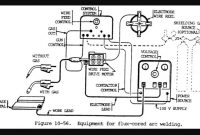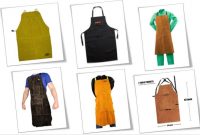Oxy Acetylene welding is a welding process manually, in which the surfaces are joined, which is warming to melt by a gas flame Oxyacetylene with or without filler metal, where the connection process is without emphasis. In addition to the purposes of welding (connecting), gas welding can also be used for preheating, brazing, cutting, and hard facing. Use for production, fieldwork, and reparations.

Table of Contents :
Oxygen Acetylene Welding (OAW) Process and Equipment:
In the application, the result is very satisfactory for welding carbon steel, mainly sheet metal and thin-walled pipes. Nevertheless, almost all types of ferrous and non-ferrous metals can be welded with welding gas, either with or without additives.
Acetylene gas is also used in hydrogen gas, natural gas, and propane, for metals with a low melting point. In the process of burning the gases needed oxygen. Oxygen is obtained from the air where the air itself contains oxygen (21%), also contain nitrogen (78%), argon (0.9%), neon, hydrogen, carbon dioxide, and other elements that form a gas.
Making Oxygen
Technically, oxygen is obtained from liquefied air. Then, by means of electrolysis, a mixture of air and water is separated by liquid oxygen. The difficult problem is between Nitrogen and Oxygen. The greater nitrogen boiling point and the boiling point of the gas is the only difference 13 0C only. So that needs oxygen purification repeatedly. Purity can be achieved up to 99.5% and then used in steel tanks with a working pressure of 15-30 atm.
Making Oxy Acetylene
In the commercial world, to produce a reaction Oxyacetylene activities with calcium carbide and water. Therefore, Oxyacetylene often called hydrocarbon gas consists of carbon, lime, and water. Oxyacetylene nature is odorless and colorless. Keep in mind that pure Oxyacetylene is very susceptible to an explosion caused by pressure and temperature factors. For this reason, the Oxy-acetylene generator is limited to a maximum pressure of 5 atm.
Oxy Acetylene Welding Set Up and Pressure Settings Chart :
- First, we must Clean the nozzle because if the head of the nozzle is dirty will cause a flame bad.
- Open Regulator Oxygen and Acetylene, set until the pressure matches with what you want or for acetylene 5 to 7 psi and Oxygen 7 to 10 psi.
- The third open valve in the torch is the first acetylene after that you can open the oxygen valve. If the gas has out from the nozzle you can use a lighter and light the torch.
Types of Oxy-Acetylene Welding Flames :
- Carburizing Flame: For this type, we use more acetylene than oxygen. Carburizing flame uses the application of soldering, silver welding, and braze welding.
- Neutral Flame: Pressure oxygen and acetylene the same. This type can be used for steel welding.
- Oxidizing Flame: We use more oxygen than acetylene. Usually, we use this flame for cutting materials from carbon steel.
Oxygen acetylene welding rods types :
- RG-60.
- RG-45.
- RG-65.
- RG is Rod Gas and 65 is tensile strength 65.000 PSI.
| Metal Thickness (inch) | Tip Size |
| 1/4 – 1/2 | 5 |
| 3/16 – 1/4 | 4 |
| 1/8 – 3/16 | 3 |
| 1/16 – 1/8 | 2 |
| 5/64 – 3/32 | 1 |
| 3/64 – 5/64 | 0 |
| 1/32 – 3/64 | 00 |
| 1/64 – 1/32 | 000 |
Oxy Acetylene Welding Kit

- Multi-fuelled torch.
- Comfortable grip handle
- Tip Cleaner
- Tough solid brass construction
- Flame stability
- Flashback resistant mixer
- High flow oxygen cutting valve
- Suitable for light to medium-duty cutting and welding
- Torch profile
- Regulators
- Gas Hose
Gas storage cylinders
Because gases stored in the bottle have a pressure greater than atmospheric pressure, it should be noted strength of steel bottles is against the pressures of work because they are causing friction and movement of gas in the bottle, it should be known types of gas, sensitive to shock or increase in temperature.
Defects in Oxygen acetylene welding.
To produce good quality, welding conditions should be running properly and the techniques and materials used must meet the standards. As is the case in other welding processes, welding defects can occur. Oxyacetylene welding disability is as follows:
- Penetration is less than perfect.
It can happen because the penetration is not performed on the entire thickness of the base metal, and weld bead two is not mutually performed inter-penetrating and penetrating into the end of the fillet weld. - Fusion is less than perfect.
These deformities occur due to lack of or non-occurrence of metal smelting gas and base metals. It is usually caused by the welding speed being minimal or low gas pressure. - Undercutting.
Occurs due to a lack of precise parameters such as gas and welding speed being too high. - Porosity.
It can occur due to atmospheric contamination and high oxidation on the surface of the workpiece. - Longitudinal crack.
They are distinguished into two categories; heat cracks caused by the position of the weld bead between the melting temperature and freezing temperatures. While the cold cracking occurs due to freezing weld bead.
See: Shielded Metal Arc Welding Machine Parts
Now you know, what is Oxy-Acetylene Welding. I hope the above article can be helpful for you who study Oxygen Acetylene Welding or OFW Welding.





Sir I can review sir… And I can study it..
yes of course